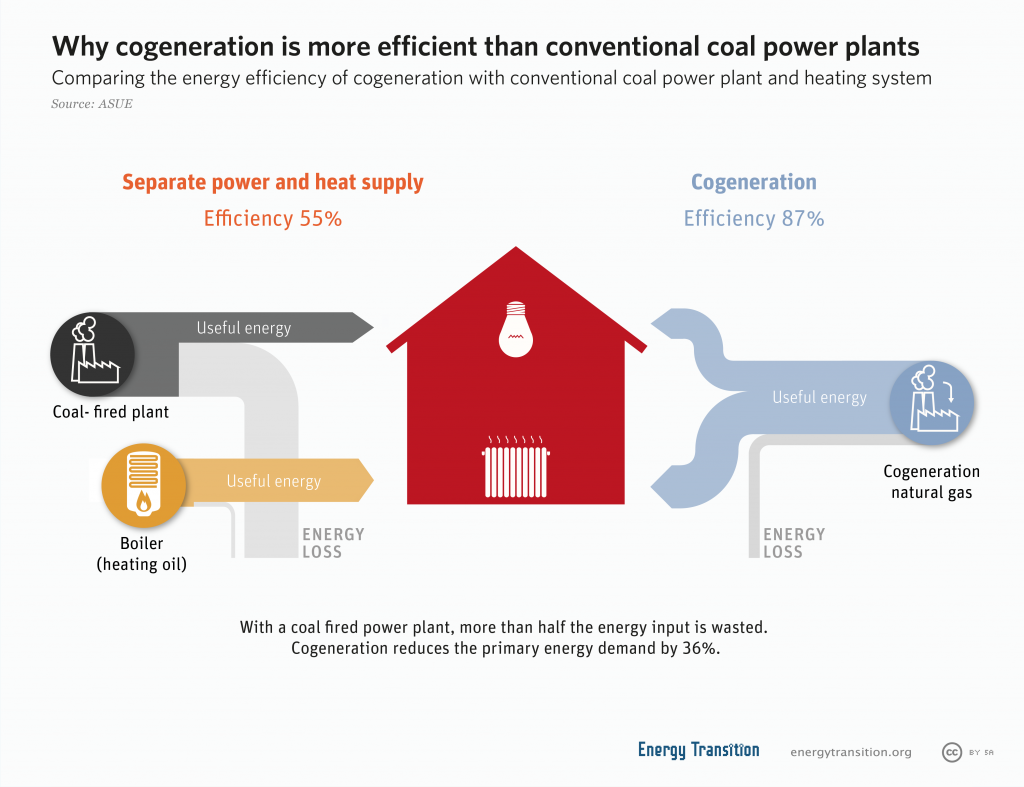When the waste heat of electricity generators is recovered for useful applications, we speak of the “cogeneration” of heat and power.
When a power plant creates electriticy, it gives off a lot of heat. Cogeneration is when that waste heat is recovered and stored. Because heat can be much more easily and efficiently stored than electricity, such units are ramped up when power is needed, and heat would be stored for later. This increases energy efficiency.

Another possibilty is “tri-generation,” which indicates that the waste heat is partly also used to provide cooling.
Not to be confused with combined-cycle gas turbines, where the waste heat (steam) is recovered to drive a second, downstream generator that produces more electricity, but does not directly provide waste heat as an application. In cogeneration, the waste heat is not recovered to produce additional electricity, but to provide space heating, process heat, etc.
Germany’s Cogeneration Act aims for the country to get 25 percent of its power supply from cogeneration units by 2020, and has so far overshot this goal.